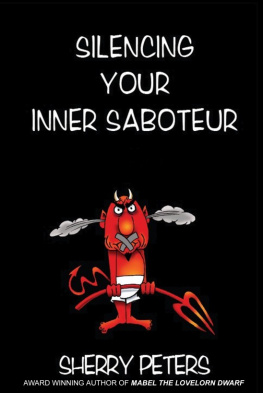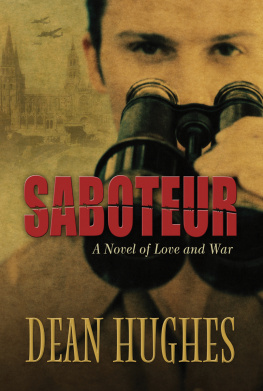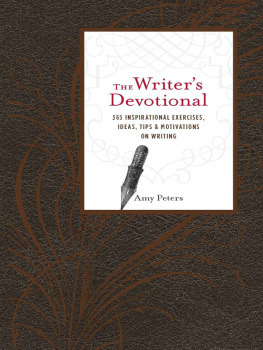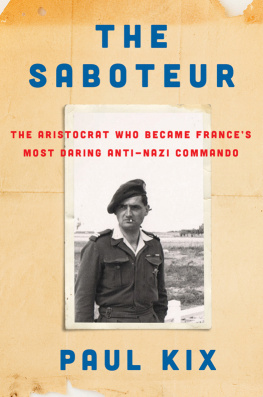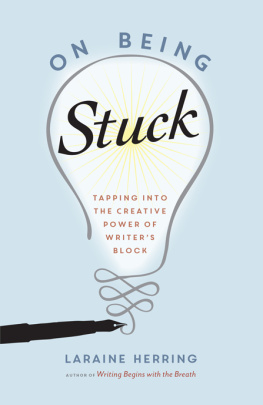SILENCING
YOUR
INNER SABOTEUR
2nd Edition
Sherry Peters
SILENCING
YOUR
INNER SABOTEUR
2nd Edition
Sherry Peters
Copyright 2013 Sherry Peters
All rights reserved. No portion of this book may bereproduced by any process or technique, without the express consentof the author, except in the case of brief quotations embodied incritical articles and reviews.
Published at Smashwords
This book is also available in print.
First edition: e-book, July 2011
DwarvenAmazon Press
http://sherrypeters.wordpress.com
Silencing Your Inner Saboteur - 2nd ed.
Author Photo by: Robert J. Sawyer
Cover Art by: Kari-Ann Anderson
This ebook is licensed for your personal enjoymentonly. Thisebook may not be re-sold or given away to other people.If you would like to share this book with another person, pleasepurchase and additional copy for each recipient. If youre readingthis book and did not purchase it, or it was not purchased for youruse only, then please return to Smashwords.com and purchase yourown copy. Thank you for respecting the hard work of thisauthor.
For
Adria Laycraft
Contents
Acknowledgements
I want to give special thanks to everyone whohelped me Silence my Inner Saboteur, and with this project inparticular. Specifically: Anne Harris, Leslie Davis Guccione,Jeanne Cavelos, Susan Sielinski, Barbara Barnett-Stewart, JeffLyman, all of my Odyssey 2005 classmates, and all my fellow SHUerspast, present, and future.
Lane Robins, I cant thank you enough forsetting me on this path of discovery. You have helped me more thanyou will ever know.
I especially want to thank Adria Laycraft,Bev Geddes, Gerald Brandt, and Robert J. Sawyer; my family Barb,Jake, Darrell, Cheryl, Katarina, Angelica, and Thomas. I am foreverindebted to you for your support.
To all of you, I couldnt have written thisbook without you!
Introduction: Second Edition
I am pleased to bring you the second editionof Silencing Your Inner Saboteur. A lot has changed since the firstedition was published.
In my practice as a Success Coach, it is myjob to help my clients uncover and explore the inevitableobjections which arise as they strive toward achieving their goals.As coaches, we call these obstacles gifts because when theyarise, they provide an opportunity to go deeper with our clients,often resulting in wonderful moments of transformation. Everyoneexperiences some kind of resistance or blockade halting theirprogress. Whether that goal be weight-loss, changing a career, orbecoming a writer, the resistance we experience comes from the sameplace--the inner saboteur.
Ive written this book with writers as theintended audience, but you may find you recognize the work of thesaboteur in other areas of your life as well. I know I have, andreaders and participants in the workshops I facilitate on thistopic have said the same.
I have incorporated my education andexperience as a Success Coach, and more of the material from theworkshop to expand the chapters from the first edition. Chapters onthe four main fears we face when working on a project, challengingourselves and appendices with additional tools to silence thesaboteur have been added.
We begin by identifying what exactly is aninner saboteur and what it is not. In identifying what the saboteuris, we can then make note of what the saboteur says.
Once we identify what the saboteur is, wemove on to discuss where the saboteur comes from and how it usesits birth from negative past experiences and comments against us.We then take some time on the voices the saboteur uses against us,and in particular its dominant voice and why it chooses that voicemost often.
Next we will discuss the four main categoriesof fear our saboteur uses against us while working on a project,how those fears affect us and how we can work around them oreliminate them.
From there we move on to the sweet-nothingsthe saboteur likes to whisper to us in an effort to lure us awayfrom our writing. It is important to note that what we believe aresweet-nothings may not be. They may be a very real need. We willdiscuss how to determine if they are sweet-nothings or if they area real need, and if they are a sweet-nothing, how to make them workto our advantage, not the saboteurs.
Then well spend some time discussing thephysical symptoms, the physical, external signs and outcomes if welisten to the saboteur; things like writers block, lack ofmotivation, and simply not feeling like writing.
By now, we will have a number of tools torecognize and mentally silence the saboteur. The final few chapterswill cover more practical and physical ways we can silence thesaboteur.
It is important to name the saboteur. Namingthe saboteur takes away its power, and the fear of the unknown isno longer valid.
We must also challenge ourselves as writers.Dont be afraid to learn, and to push ourselves. Writing is anon-going learning process. Acknowledging that and developingourselves as writers gives us power over the saboteur.
The final two chapters will cover othermethods and tools we can use to silence the saboteur.
This book is not a guarantee of publication,but if you complete the exercises and learn to silence the innersaboteur, you will get to a place where you are happy with yourwriting, where you can feel proud of what you have done, that youhave done everything you possibly can to make your dream cometrue.
As a Success Coach, I believe that:
People make the best choices available tothem.
Everyone is capable of being the best versionof themselves.
People already have all the resources theyneed within themselves to get whatever they truly want.
These are principles that I apply to mypractice as a coach, and to every chapter and exercise in thisbook. By the end, you too, will see that you have the resourceswithin yourself to silence the saboteur.
Together, we can express ourselves, ourcreativity, and succeed in writing and silencing the innersaboteur.
Introduction
Welcome to Silencing Your Inner Saboteur.This book is designed to help writers of every level to silencetheir inner saboteur, to identify the voice of their saboteur,recognize the tricks it uses to keep them from achieving theirgoals, and how to win the battle against it.
Ever since I could hold a pencil, I wanted towrite. My loopy scribbles were beautiful cursive writing to me,which I proudly passed to my mom, telling her Id written her aletter or a story. Whether it was intentional encouragement, or shewanted me to stop interrupting her conversations with family andguests, shed tell me to write some more. Intentional or not, shedid encourage me.
After Id learned how to read and write--Iwas probably age 6 or 7--I began to write chapter books. Of course,a chapter was a sentence long, so to fill up the rest of the page,I drew the illustrations. At least I did on some of the pages. Iwas far more interested in the writing so I am sure the picturesstopped. My mom helped me make covers for these chapter books outof construction paper, stapling the pages together.
It was so much easier to write back then.Nothing stood in my way. I didnt doubt my talent as a writer, Ihad the books to prove it.
If only the business of writing stayed thateasy.
Unfortunately, in our pursuit of publication,of awards, of placing on the bestsellers list, we no longer havethe innocence of a child, and the saboteur becomes more vocal, morepersuasive, hindering our progress, crushing our hopes and dreamsbefore we being to chase after them.
I wrote for years after high school, but Inever felt like I knew enough about the process of writing, or evenhow to write. I applied to the Odyssey Writing Workshop, seeing itas an amazing six week intensive opportunity to learn a lot of theessentials of writing Id never had the chance to learn before. Iattended Odyssey in the summer of 2005. The workshop, and thedirector and our instructor, Jeanne Cavelos, gave me the tools andthe confidence to know I was going in the right direction with mywriting.
Next page
